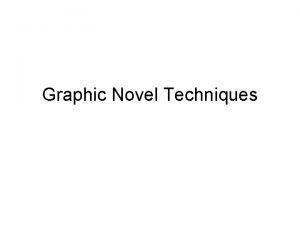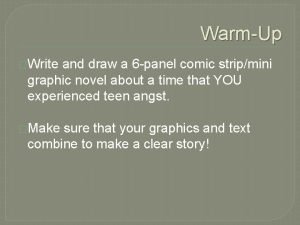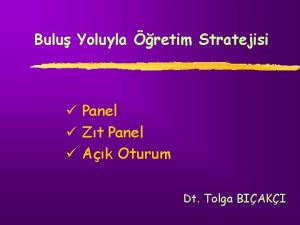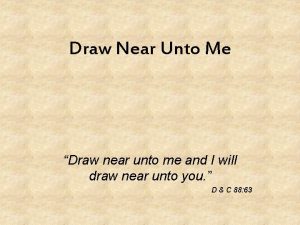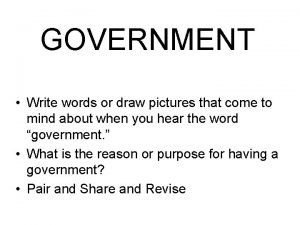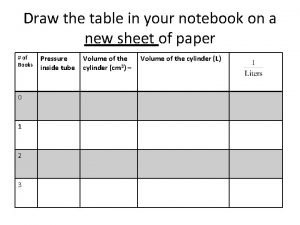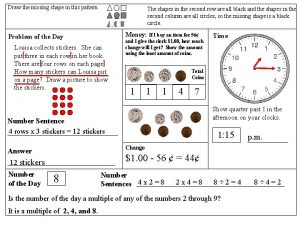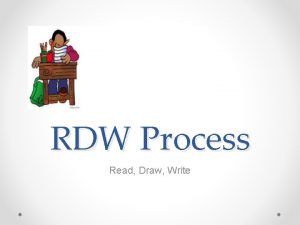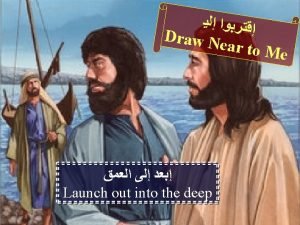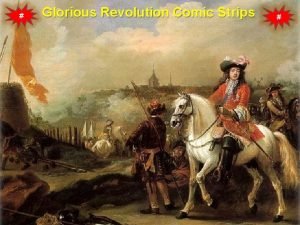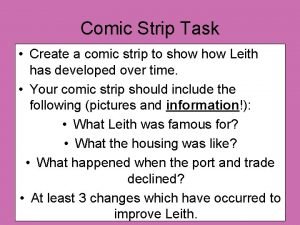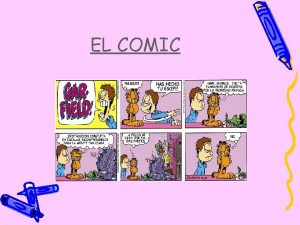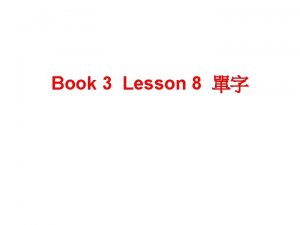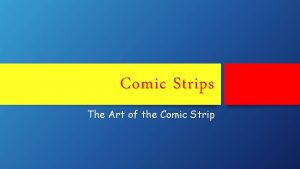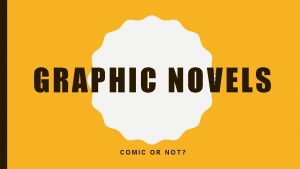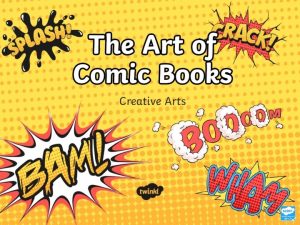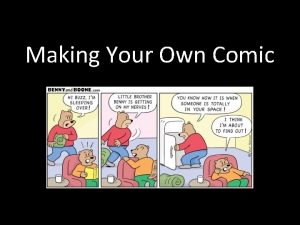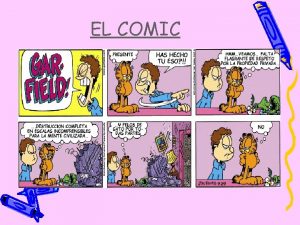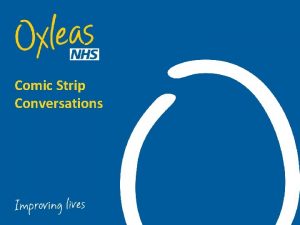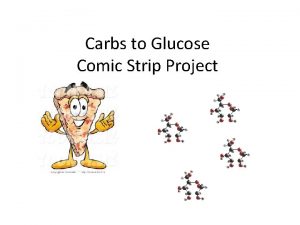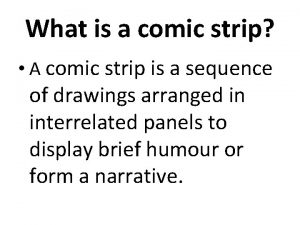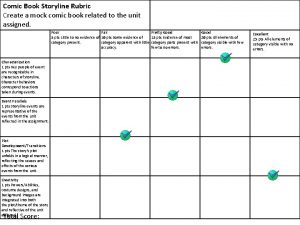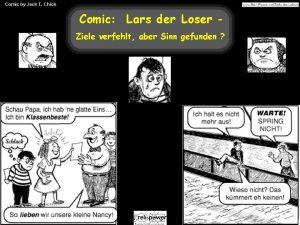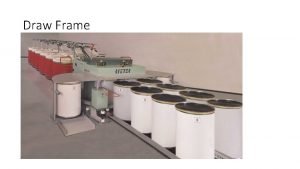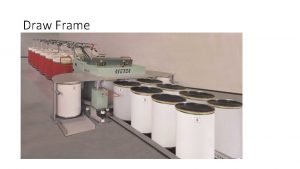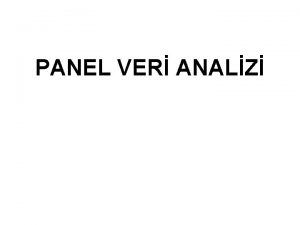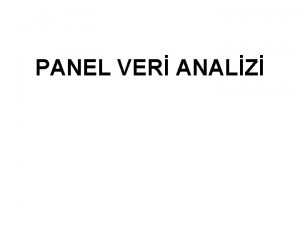WarmUp Write and draw a 6 panel comic

























- Slides: 25

Warm-Up �Write and draw a 6 -panel comic strip/mini graphic novel about a time that YOU experienced teen angst. �Make sure that your graphics and text combine to make a clear story!

Pair & Share �Grab a partner and exchange warm-ups. �Read your partner’s comic strip. �On the back, write a 10 WORD SUMMARY of their experience with teen angst.

Review � Take back your comic strip. � Read your partner’s summary. � Is it accurate? If so, then you did a great job communicating your experience through graphics and text. � Are there mistakes? If so, then you need to work on clarity. In a graphic novel, if it’s not clear, it’s the author’s mistake, not the reader’s.

(p. 53 -54) Graphic Novels Terms and Concepts

What is a graphic novel? Definition: A narrative work, often told in first person, in which the story is conveyed to the reader using a combination of graphics and text.

Graphic Novels � LENGTH: some up to 400 -500 pages long � RESOLVED STORY ARC � THEMES: more real world themes like identity, religion, death, fitting in, personal struggles � SPLASH PAGES: used for mood, to convey strong emotion vs. Comics � LENGTH: Between 30 -40 pages � USUALLY PRINTED IN SERIAL FORM � THEMES: superheroes, comedy � SPLASH PAGES: used for big reveals or cliff hangers

How do you read a graphic novel? A graphic novel is "not only something one reads but something one sees as well. . . [it is] like reading and watching a movie at the same time” (Gallo and Weiner, 115).

How do you read a graphic novel? �Read from left to right like a traditional book �Words and dialogue are the primary focus with the image coming in second �Transitions happen much faster in a graphic novel compared to a regular book �Read the text first, then look at the image within that panel before moving on to the text in the next panel

How do you read a graphic novel? �The #1 rule to remember: the bigger the panel, the more time you should spend looking at it and analyzing it.

Layout �Panel: a section, usually a box, containing a combination of image and text in endless variety. Panels offer a different experience than simply reading the text.

Layout �Frame: the lines and borders that contain the panels �Gutter: the space between framed panels (contrast the gutters on page 62 with page 63) �Bleed: an image that extends to/beyond the edge of the page

Bleed

Layout �Foreground: the parts closest to the viewer �Midground: The artist places an image centered or off centered to create visual tension. �Background: provides additional information for the reader, such as time period and setting


Figures � Faces: Some faces depict an actual person; others are symbolic. • They can be dramatic when placed against a detailed backdrop • They can be drawn without much expression or detail, which invites the audience to figure out what the character is thinking. This is called an “open blank” • Note: When we say look at the faces, you are actually looking for the emotion or what clue we are getting from the face – not just that there is one.


Figures • Hands and Feet: the position of hands and feet can be used to express what is happening in the story. • • Hands with palms out might suggest surprise. Hands over the mouth might depict fear, shame, or shyness. Feet that appear in motion might create a sense of panic, urgency. When we say look at the hands and feet, we are asking you to look for the clues we might get from them. • •


Text Captions: these boxes contain a variety of text elements, such as scene-setting, description (page 73) • Special-Effects lettering: highlights or draws attention to the text. Think about onomatopoeia in Batman comic strips (Blam! Pow!) (page 17, 106) • • Speech balloons: these enclose dialogue and come from a specific speaker’s mouth. – External dialogue is speech between characters (45) – Internal dialogue is a thought enclosed by a balloon that has a series of dots or bubbles going up to it. (97)

How Graphic Novels are Created �Gene Yang: Creating a Graphic Novel

Graphic Novel Practice �Use the handout with the panels to practice identifying and labeling terms and concepts associated with the graphic novel. �Write all over it. Use arrows, lines, etc. to mark the different features. Aim for three to five annotations per panel.




Exit Slip: Summarizer Write a note to an absent student explaining what we did today and what you learned.
 Bleed comic definition
Bleed comic definition Midground graphic novel
Midground graphic novel Continuous panel vs discontinuous panel
Continuous panel vs discontinuous panel Zıt panel tekniği
Zıt panel tekniği Warmup ratio
Warmup ratio Warmup 65
Warmup 65 Gmass warmup
Gmass warmup Status vs class
Status vs class Pyramid warmup
Pyramid warmup Warm rhyming words
Warm rhyming words Multiplication property of exponents
Multiplication property of exponents Java warmup
Java warmup Define:warmup
Define:warmup Pathos story
Pathos story Tinman calculator
Tinman calculator Warmup 65
Warmup 65 Warmup end
Warmup end Draw near unto me and i will draw unto you
Draw near unto me and i will draw unto you Draw pictures or write words
Draw pictures or write words Read and draw in your notebook
Read and draw in your notebook Document camera
Document camera Read draw write eureka math
Read draw write eureka math Advantages of flowchart
Advantages of flowchart How to draw use case diagram in draw.io
How to draw use case diagram in draw.io Draw
Draw Write/draw near the image
Write/draw near the image
